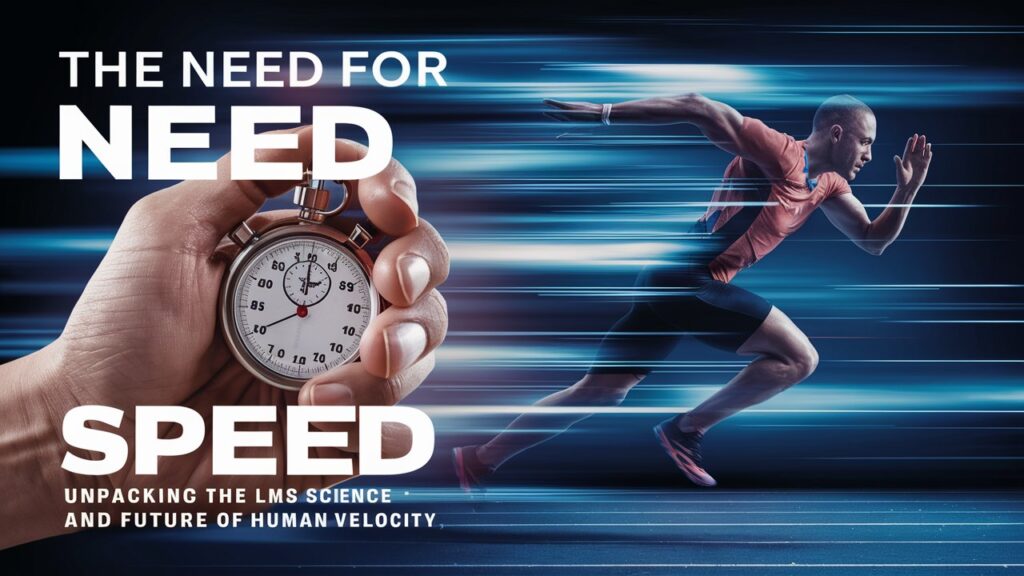Introduction: The Enduring Fascination with Human Speed
From the earliest hunters pursuing prey across savannas to modern athletes shattering records on Olympic tracks, the pursuit of speed is etched into human DNA. It represents more than mere physical prowess—it embodies our relentless drive to push boundaries, defy limitations, and understand the very mechanics of our existence. This article delves into the multifaceted world of human velocity, exploring its biological foundations, historical evolution, scientific innovations, and the tantalizing question of how much faster we can go. Prepare to journey through the anatomy of a sprinter’s stride, the technology reshaping competition, and the physiological barriers that both confine and inspire us.
The Biological Engine: Muscles, Nerves, and Biomechanics
Human speed hinges on a symphony of biological systems working in perfect synchrony. Muscles—specifically fast-twitch fibers—generate explosive power, contracting with extraordinary force to propel the body forward. These fibers rely on anaerobic metabolism, rapidly converting glycogen into energy without oxygen, enabling bursts of acceleration essential for sprinting. Meanwhile, the nervous system acts as the ultimate conductor: motor neurons fire signals at lightning speed, coordinating muscle activation patterns and refining reaction times. This neural efficiency separates elite sprinters from the rest; their brains optimize muscle recruitment, minimizing energy waste. Biomechanics further dictates performance. The angle of a runner’s lean, the ground contact time of each footstrike, and the elastic energy stored in tendons during impact all influence velocity. Even subtle adjustments—like a 5-degree shift in knee lift—can alter drag and stride efficiency. Thus, speed isn’t just strength; it’s a precision-engineered interplay of biology and physics.
From Ancient Footraces to Modern Tracks: The Evolution of Speed
The history of human speed is a chronicle of cultural obsession and physiological refinement. Ancient Greeks celebrated sprinting in the original Olympic Games, where victors achieved near-mythic status. Yet early runners faced severe limitations: uneven terrain, minimal footwear, and no scientific training. The 20th century ignited a revolution. Evolution in technique emerged, like the crouching start popularized in the 1920s, reducing wind resistance. Breakthroughs in nutrition and periodized training regimens allowed athletes to peak strategically. Crucially, the standardization of synthetic tracks in the 1960s replaced cinder surfaces, enhancing traction and energy return. This infrastructure shift, paired with global talent scouting, democratized speed. Today’s records—like Usain Bolt’s 9.58-second 100m dash—stand on centuries of incremental progress, reflecting not just individual genius but collective human innovation.
Breaking Barriers: Advanced Training and Performance Enhancement
Elite speed demands more than raw talent; it requires meticulously engineered training methodologies. Modern programs blend strength conditioning (e.g., plyometrics for tendon resilience), overspeed workouts (downhill sprints to neurologically “trick” the body into faster cadences), and cryotherapy for muscle recovery. Techniques like biomechanical motion capture allow coaches to analyze joint angles and force production in real-time, enabling micro-adjustments to form. Performance enhancement also extends to psychology: neurofeedback training helps athletes enter “flow states,” reducing perceived effort during maximal exertion. Ethical considerations remain paramount, however. While innovations like altitude-simulating hypoxic tents boost red blood cell counts naturally, the shadow of doping underscores the fine line between human potential and artificial advantage. The quest is clear: unlock speed through science while honoring the body’s innate limits.
Technological Turbines: How Equipment Redefines Speed
Technology has become the silent partner in humanity’s speed odyssey. Footwear alone illustrates this revolution: sprint spikes now feature carbon-fiber plates and aerodynamic stud configurations that amplify force transfer, shaving milliseconds off times. For endurance, advanced textiles with thermoregulating properties reduce overheating during sustained efforts. Equipment in cycling showcases even more radical gains. Aerodynamic helmets, disk wheels, and skin suits crafted in wind tunnels minimize drag, transforming human power into unprecedented velocity. Innovation extends beyond gear. Sensor-embedded tracks provide real-time data on stride length and symmetry, while AI algorithms predict fatigue patterns. Even everyday runners benefit: GPS watches and biomechanics apps democratize analytics once reserved for Olympians. Yet technology sparks debate: when does a “tool” become an unfair augment? The line between athlete and apparatus blurs, challenging our definition of human achievement.

Legends of Velocity: The Fastest Humans in History
Records crystallize the zenith of human speed, and names like Usain Bolt, Florence Griffith-Joyner, and Eliud Kipchoge dominate this pantheon. Bolt’s 100m world record (9.58 seconds) exemplifies biomechanical perfection: his 6’5″ frame generated longer strides, while his extraordinary power-to-weight ratio allowed explosive starts despite his height. Griffith-Joyner’s 100m (10.49s) and 200m (21.34s) marks, set in 1988, remain unbroken, fueled by her iconic efficiency and stride fluidity. Beyond sprints, Kipchoge’s sub-2-hour marathon (1:59:40) redefined endurance speed, combining drafting formations, laser pace guides, and metabolic efficiency. These sprinters and runners share common traits: genetic predispositions (like ACTN3 “speed gene” variants), obsessive consistency, and an ability to thrive under pressure. Their achievements are monuments to human potential—each record a beacon for future generations.
The Horizon of Velocity: Genetic Frontiers and Beyond
The future of human speed teeters on the edge of biology and ethics. Predictions suggest gene editing (e.g., CRISPR) could enhance muscle fiber composition or oxygen utilization, though this risks sport’s fundamental fairness. Biomechatronics—prosthetics or exoskeletons—might aid rehabilitation or even augment able-bodied athletes, raising philosophical questions about “natural” limits. Meanwhile, data analytics will grow hyper-personalized: DNA testing combined with AI could tailor training to individual genotypes, optimizing nutrition, sleep, and workload. Environmental interventions also loom: custom-engineered tracks with tuned elasticity or temporary low-gravity training chambers. Yet beyond genetic engineering, cultural shifts matter. As global talent pools deepen and youth training sophisticates, previously untapped demographics may yield new legends. The ceiling isn’t static—it’s a frontier waiting for the next pioneer.
Conclusion: The Unyielding Pursuit of the Next Second
Human speed is a narrative of paradoxes: it’s governed by immutable biological laws yet perpetually stretched by ingenuity; it’s measured in fractions of seconds yet resonates across generations. Our fascination endures because speed transcends sport—it mirrors humanity’s broader hunger for progress. Every shattered record, every innovation in sneaker design or track surface, whispers the same truth: our limits are not fixed. They are challenges waiting for the confluence of biology, technology, and will. As we stand on the cusp of genetic and technological revolutions, the quest for velocity remains a testament to our restless spirit. The finish line is never final—it’s merely the start of the next race.
Frequently Asked Questions (FAQs)
Q: What’s the maximum possible human running speed?
A: Current models suggest a theoretical limit near 40 mph (64 km/h) for brief sprints, based on muscle contraction power, ground force production, and metabolic constraints. Usain Bolt peaked at 27.8 mph, leaving room for improvement but requiring extraordinary genetic and technical optimization.
Q: Can technology make us faster than biological evolution?
A: Absolutely—but with caveats. Equipment like advanced footwear or aerodynamic gear reduces energy loss, effectively making humans faster without altering biology. However, true “augmentation” (e.g., performance-enhancing exoskeletons) could redefine sports categories to separate natural from technology-assisted feats.
Q: Why do some populations dominate sprinting or endurance?
A: A mix of genetics, culture, and infrastructure. West African ancestry is linked to higher fast-twitch muscle fiber density, benefiting sprinters. East African runners (e.g., Kenyan distance elites) often have metabolic efficiencies adapted to altitude. Cultural emphasis on running and access to training resources amplify these innate advantages.
Q: Will genetic engineering create “super-sprinters”?
A: Potentially—but it’s ethically contentious. Editing genes like ACTN3 (associated with fast-twitch muscles) or ACE (linked to oxygen efficiency) could enhance speed. However, sporting bodies like WADA ban genetic doping, prioritizing fair competition over artificial enhancement.
Q: How can amateur runners increase their speed safely?
A: Focus on progressive overload:
- Strength Training: Squats and lunges build power.
- Plyometrics: Box jumps improve explosive force.
- Sprint Intervals: Short, maximal efforts with full recovery.
- Form Drills: High knees, butt kicks, and stride analysis.
- Recovery: Sleep and nutrition (especially protein for muscle repair) are non-negotiable.
Q: Is there a trade-off between speed and endurance?
A: Physiologically, yes. Sprinters prioritize fast-twitch muscles for anaerobic bursts, while endurance athletes rely on slow-twitch fibers optimized for aerobic efficiency. Training one system can slightly compromise the other—but hybrid athletes (e.g., 400m runners) balance both through targeted workouts.
